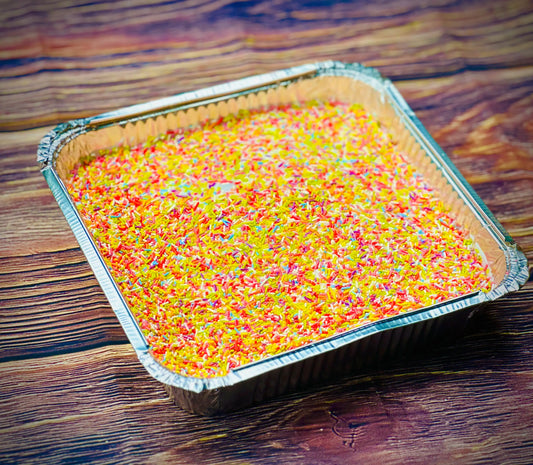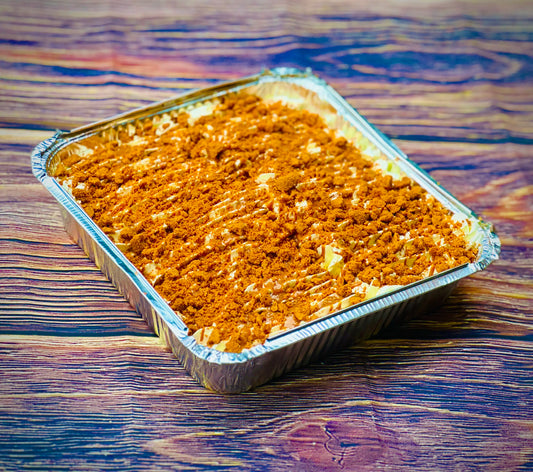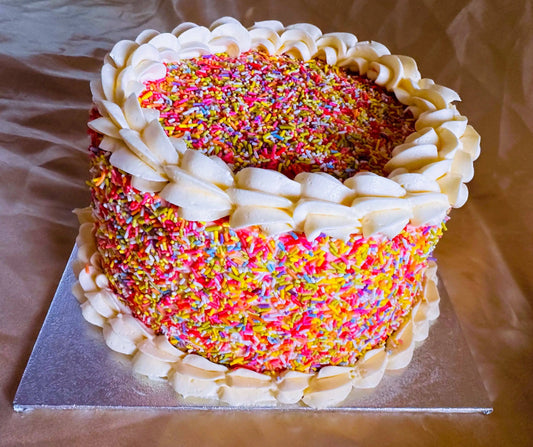Baking a cake is often seen as a delightful blend of art and science. From the light, fluffy texture to the mouth-watering aroma that fills the kitchen, there's something truly magical about creating the perfect cake. In this article, we'll delve into the fascinating science behind baking that flawless bespoke cake using the right techniques and ingredients.
Understanding the Basics
Before we jump into the intricate details, let's start with the basics. Every cake is essentially a combination of four key ingredients: flour, sugar, eggs, and butter. The magic begins when these ingredients are carefully mixed and baked to perfection in the oven. However, achieving that ideal texture and taste requires a deeper understanding of the science behind the process.
The Role of Flour
Flour is the foundation of any cake recipe. It provides structure and stability to the cake by forming a network that traps air bubbles during mixing. The type of flour used can significantly impact the texture of the cake. For lighter cakes like the Heart Cake, cake flour is preferred, while all-purpose flour works well for denser cakes such as Milk Cake.
The Sweetness of Sugar
Sugar does more than just sweeten the cake; it also plays a crucial role in the texture and moisture retention. When sugar combines with the liquid ingredients, it creates a tender crumb and a moist cake. However, it's essential to strike the right balance to avoid an overly sweet or dry cake, especially when baking a Birthday Cake for a special occasion.
The Power of Eggs
Eggs act as a binding agent that brings the cake batter together. The proteins in eggs help the cake rise and provide structure. When whipped, eggs incorporate air into the batter, resulting in a light and fluffy cake. Whether you're making a simple sponge or a decadent layered cake, eggs are a crucial component of the baking process.
The Magic of Butter
Butter adds richness and flavour to the cake. When creamed with sugar, butter creates a light and airy texture by incorporating air into the batter. The temperature of the butter is key; it should be at room temperature for proper creaming. Whether you're baking a classic Victoria sponge or an elaborate multi-tiered cake, butter is essential for that perfect crumb.
The Science of Leavening Agents
Leavening agents are what make the cake rise and achieve that soft, tender texture. Baking powder and baking soda are commonly used leavening agents that react with the other ingredients to create bubbles that expand during baking. This expansion is what gives the cake its light and fluffy consistency, making it a delightful treat for any occasion.
Temperature and Timing
Getting the temperature and timing just right is crucial in baking a perfect cake. Preheating the oven ensures that the cake starts baking at the correct temperature, allowing for optimal rise and texture. Similarly, following the recommended baking time prevents the cake from overcooking or being underdone. This attention to detail is essential for achieving the desired results, especially when you need Same & Next Day Cake Delivery.
Embracing Creativity with Cake Bake Trays
When it comes to baking a bespoke cake, the right tools can make all the difference. Cake bake trays are designed to ensure even baking and easy release, allowing you to create intricate designs and shapes with ease. Whether you're experimenting with new flavours or decorating a themed cake, the right cake bake trays can elevate your baking experience and help you unleash your creativity.
Mastering the Art of Decoration
Once the cake is baked and cooled, the final step is decoration. From smooth buttercream frosting to elaborate fondant designs, how you decorate your cake can truly make it a work of art. Understanding the basics of cake decoration, such as piping techniques and colour mixing, can help you add that perfect finishing touch to your creation, whether it's a simple cake for a family gathering or an elaborate masterpiece for a special event.
Experimenting with Flavours and Fillings
One of the joys of baking is experimenting with different flavours and fillings to create a unique cake that suits your taste preferences. Whether you're a fan of classic flavours like vanilla and chocolate or enjoy more adventurous combinations like fruit compotes and nutty fillings, the possibilities are endless. Don't be afraid to get creative in the kitchen and discover a flavour profile that truly speaks to you.
Creating Memorable Moments with Cake
Baking a cake is more than just following a recipe; it's about creating unforgettable moments and memories with your loved ones. Whether you're surprising a friend with a bespoke cake on their birthday or celebrating a joyous occasion with a beautifully decorated cake, the process of baking and sharing a cake is a special experience that brings people together. So, the next time you bake a cake, remember that you're not just creating a delicious treat – you're creating moments that will be cherished for years to come.
The Sweet Science of Baking
As you embark on your baking journey and strive to bake the perfect cake, remember that behind every successful bake is a mix of precision, creativity, and a sprinkle of magic. By understanding the science behind baking and experimenting with different techniques, flavours, and designs, you can elevate your cake-making skills and create showstopping creations that will impress everyone. So, roll up your sleeves, preheat that oven, and let the sweet science of baking guide you towards creating cakes that are not only delicious but also made with love and care.









